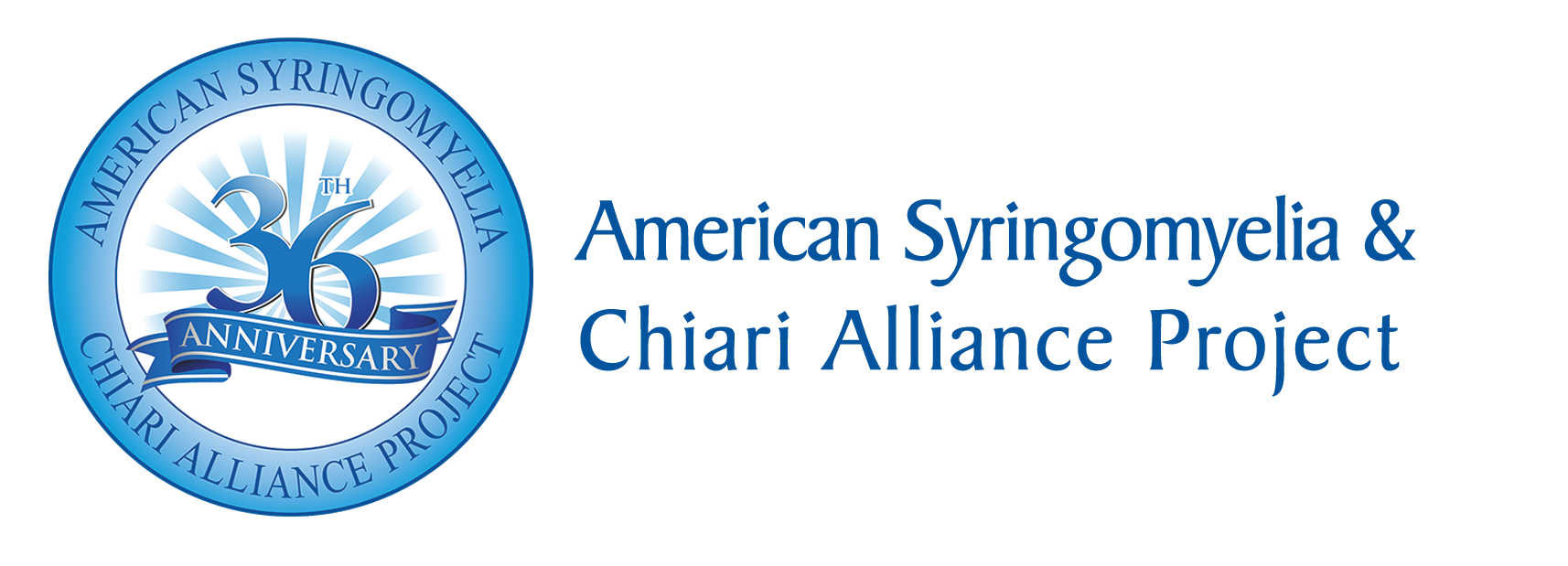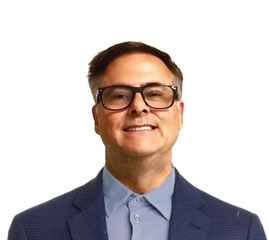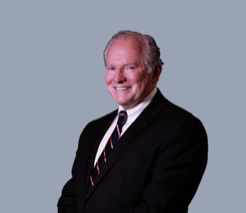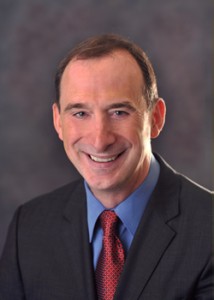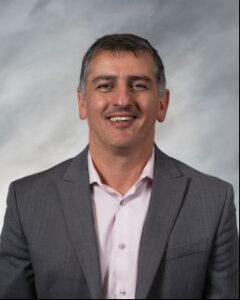2024 Conference
Tuesday, July 16, 2024
Tuesday, July 16, 2024
Webcast – Synopsis: In this presentation we will initially deal with the definition, location, and etiology of primary (acquired) syrinx. Examples will include syrinx’s related to spinal cord tumors, secondary to trauma, and associated with spinal column abnormalities. I will also discuss the management, treatment, and follow-up required.
About Dr Levy: Dr Michael Levy is the Professor and Division Head of the University of California San Diego Division of Pediatric Neurosurgery. Michael Levy, M.D., Ph.D., is chief of pediatric neurosurgery at Rady Children’s Hospital-San Diego and UC San Diego School of Medicine.
In 2002, he was recruited to develop a Pediatric Neurosurgical Center of Excellence at Rady Children’s and a pediatric neurosurgical fellowship at UC San Diego. Currently, Dr. Levy is the director of UC San Diego’s Pediatric Neurosurgical Fellowship Training Program and its pediatric neurosurgical international fellowship.
Dr. Levy’s expertise lies in the treatment of complex pediatric brain tumors and cerebrovascular malformations. He is also involved with the design and utilization of endoscopy and three- dimensional imaging technologies to facilitate surgery.
Along with his clinical expertise, Dr. Levy is actively involved in research and is widely published, with more than 200 papers appearing in peer-reviewed literature, seven books and more than 60 book chapters. Additionally, he is currently on the editorial boards of 16 peer-reviewed journals, including Neurosurgery, Journal of Health Communications, World Neurosurgery, Frontiers in Pediatrics and Journal of Neurosurgical Sciences.
Dr. Levy’s professional memberships include the Society of University Neurosurgeons, the American Academy of Neurological Surgery and the American Society of Pediatric Neurosurgery, along with Alpha Omega Alpha (Medical Honor Society), the American College of Surgeons, the American Association of Neurological Surgeons, the Congress of Neurological Surgeons, Joint Section of Pediatric Neurosurgery and the WHO Global Initiative for Emergency and Essential Surgical Care.
When not practicing medicine, Dr. Levy works with the National Football League as an unaffiliated sideline physician and for the NFL Players Association as a surgical consultant.

Webcast – Synopsis: In this presentation we will discuss the mechanisms of pain associated with Chiari malformations and Syringomyelia. I will discuss pharmacologic and non-pharmacologic approached to pain management.
About Dr Crawford: Dr. John Crawford is Division Chief of Child Neurology and Professor of Clinical Pediatrics at CHOC and UC Irvine. He is also Co-Medical Director of the CHOC Neurosciences Institute. Dr. Crawford is board-certified by the American Board of Psychiatry and Neurology in Neurology with Special Qualifications in Child Neurology and by the United Council for Neurology Subspecialties in Neuro-oncology. He graduated from the University of Massachusetts at Amherst with a Bachelor of Science in Biochemistry and a Master’s degree in Biochemistry and Molecular biology. Dr. Crawford attended medical school at the University of Massachusetts at Worcester. Following medical school, he completed his pediatrics training at Los Angeles County/University of California and child neurology and neuro-oncology training at Children’s National Medical Center. Prior to his arrival at CHOC, Dr. Crawford was professor of clinical neurosciences and pediatrics at University of California San Diego and director of neuro-oncology at Rady Children’s Hospital. As prior director of the Child Neurology Fellowship Program and Neuro-Oncology Fellowship Program at UCSD, Dr. Crawford has mentored dozens of neurology and oncology trainees throughout his career. Dr. Crawford’s research interests are in translational pediatric neuro-oncology including molecular-guided approaches to the diagnosis and treatment of pediatric central nervous system tumors.
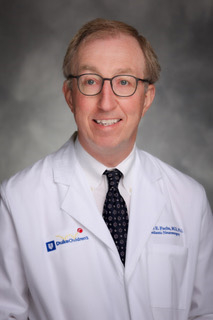 About Dr Fuchs: Dr Herbert Fuchs attended UCLA where he received his BS in Biochemistry. He then attended Duke University where he earned his MD and PhD. He attended Duke Neurosurgery for his Internship and residency, and Children’s Memorial Hospital in Chicago: Pediatric Neurosurgery Fellowship. Dr Fuchs is part of the faculty at Duke Neurosurgery and is Chief of Pediatric Neurosurgery.
About Dr Fuchs: Dr Herbert Fuchs attended UCLA where he received his BS in Biochemistry. He then attended Duke University where he earned his MD and PhD. He attended Duke Neurosurgery for his Internship and residency, and Children’s Memorial Hospital in Chicago: Pediatric Neurosurgery Fellowship. Dr Fuchs is part of the faculty at Duke Neurosurgery and is Chief of Pediatric Neurosurgery.
Webcast – Synopsis: The last time we met, we outlined the evolution of marijuana from a substance abuse to one with medical potential. However, that potential has been mitigated by the health professional community’s reluctance to embrace the therapeutic use of medical marijuana when it provides a solution/relief to patients. Additionally, marijuana is not benign; like any drug, its interactions and side effects need to be considered, especially in the context of medical treatment.
This session will discuss these issues and how health professionals can become more knowledgeable about their patient’s use of medical marijuana, even if its therapeutic use is not a path they suggest.
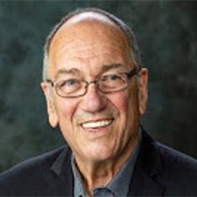 About David Knowlton: David Knowlton retired as President and CEO of the New Jersey Health Care Quality Institute, an independent, nonpartisan organization promoting healthcare quality, safety, accountability, and cost containment.
About David Knowlton: David Knowlton retired as President and CEO of the New Jersey Health Care Quality Institute, an independent, nonpartisan organization promoting healthcare quality, safety, accountability, and cost containment.
He currently chairs the HealthWell Foundation, which helps patients afford their medications when their insurance is inadequate. Since 2004, HealthWell has awarded over $4.1 billion in copayment assistance and helped more than 930,000 patients afford their medications. In 2023, HealthWell awarded more than $1 billion in grants. From 2009 to 2010, he served as Chairman of the Leapfrog Group, a national organization promoting healthcare safety and quality, and as a board member for ten years.
David was Deputy Commissioner of Health for the State of New Jersey from 1987 until 1990 under the administration of Gov. Tom Kean. Following Governor Chris Christie’s 2009 election as governor, David led the governor’s transition team on health care.
David topped NJ Spotlight’s “New Jersey’s Top 10 Healthcare Policy Analysts and Experts” list and was listed in the annual NJBIZ “Power 50 Health Care” rankings.
He founded and currently leads the not-for-profit Cannabis Education and Research Institute (CERI) to preserve and expand access to medicinal marijuana.
David is a founding board member of America’s Nurses, the nation’s first nurse practitioner practice management organization. In 2021, they launched their flagship practice, Altrix Primary Care, in Nashua, New Hampshire.
David completed his baccalaureate in psychology at the University of Massachusetts in Amherst and received a master’s degree from Trinity College in Hartford.
Synopsis: To bring Chiari imaging back to the basics, we will review common measurement techniques at the craniocervical junction and the relevant anatomy at this level. This talk will help demystify the neuroradiologist’s role in the diagnosis and follow-up of Chiari and Syringomyelia.
About Dr Yang: A board-certified radiologist/neuroradiologist, Dr. Carina Yang is an Associate Professor of Radiology, and has served as the Director of Pediatric Neuroradiology at the University of Chicago Medicine since 2013, with a focus on diagnosing and characterizing the full scope of head, brain, spine and neck conditions. Dr. Yang is an expert in interpretation of neuroradiological computerized tomography (CT) and magnetic resonance (MR) examinations, and promotes techniques for pediatric patients to minimize radiation exposure and performing testing without the need for extended sedation. She also serves as the Vice Chair of Diversity & Inclusion for her department, and is the Faculty Director for Fellowship Accreditation with the Office of Graduate Medical Education.
Dr. Yang was previously a team member for the Margaret Hackett Family Program at the University of Chicago, which aims to collaborate with physicians who advocate for the education and the advancement of knowledge pertaining to the care of patients. She is an elected member of the American Syringomyelia & Chiari Alliance Project Board. Dr. Yang is also a collaborating researcher with other pediatric neuroscience clinicians in evaluating topics including noninvasive MR of meningeal lymphatics in patients with craniosynostosis, and the potential relationship of retinopathy of prematurity to posterior reversible encephalopathy syndrome (PRES) in premature infants.
She was selected as a Senior Faculty Scholar in the Bucksbaum Institute for Clinical Excellence, as well as recently inducted as a Fellow of the University of Chicago Pritzker School of Medicine Academy of Distinguished Medical Educators. She also has great interest in promoting neuroradiology education to trainees and practicing clinicians on a global arena, with past invited visiting professorships to locations such as Newfoundland, Canada; Trinidad; Hong Kong; as well as Gwalior and New Delhi, India, in part with funding from two University of Chicago Provost’s Global Faculty Awards. She was selected as the 2019 Anne G. Osborn American Society of North America International Outreach Professor to Ethiopia, and most recently traveled to Armenia for additional volunteer pediatric neuroradiology teaching. She hopes to continue to further her worldwide educational endeavors at new upcoming sites.
Synopsis: The criteria by which 53 patients with cervical medullary syndrome were selected for craniocervical stabilization and fusion, the surgical technique and outcomes analysis is presented. Any controversial aspects will be addressed in the following Q and A.
Dr. Fraser C. Henderson Sr. worked as foreman on a cattle station in the Outback of Australia before receiving his Bachelor’s and Medical degrees at the University of Virginia, Charlottesville, Virginia in 1982. He served with the Multi-National Peace Keeping Force in Beirut, Lebanon, earning the Navy Commendation Medal for preparedness and treatment of mass casualties, following the terrorist bombing attack on October 23rd, 1983. After completing his residency he returned to complete his active duty obligation at the National Naval Medical Center, Bethesda, Maryland. He was Brigade Neurosurgeon for the 4th Marine Expeditionary Brigade in Desert Shield and Desert Storm, in the 1st Gulf War, 1990-91. In 1993 he was International Fellow for Craniospinal surgery at The National Hospitals for Neurology and Neurosurgery, Queen Square, London. He then joined Georgetown University as Director of Neurosurgery of the Spine and Craniocervical Junction. In 2005 he was promoted to Professor of Neurosurgery (Scholar tract).
Dr Henderson entered private practice in 2008, continuing his academic affiliation with Georgetown University. Dr Henderson has published over 130 peer reviewed articles, patents and book chapters, edited numerous books and proceedings, and given over 200 invited lectures. Dr. Henderson is Adjunct Professor of Neurosurgery, University of Maryland School of Medicine, Director of The Metropolitan Neurosurgery Group, and a staff member at University Maryland Capital Regional Medical Center , and Executive Board member of the Bobby Jones Chiari Syringomyelia Foundation, a member of the Pan African Academy of Christian Surgeons, and an Officer of The Order of St. John. His recently published book, “Symptomatic” describes the diagnosis and evaluation of the 75 symptoms of the patient with Ehlers Danlos Syndrome.
Join us for the opening dinner reception. Mix and mingle for a few hours, meet others who can relate to your situation, make lifelong friends, and get reacquainted with old ones. Enjoy the entertainment.
Wednesday July 17, 2024
Wednesday July 17, 2024
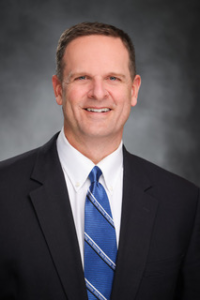
Grant returns to Duke from Stanford University, where he is currently an endowed professor and chief of pediatric neurosurgery.
In 2006, Grant joined Duke’s faculty as an associate professor in the Department of Surgery after serving in active duty in the United States Air Force. He was deployed to Iraq in support of Operation Iraqi Freedom. He left Duke in 2013 to become Chief of Pediatric Neurosurgery and Vice Chair of Neurosurgery at Stanford. He also serves an Associate Dean of Academic Affairs at Stanford.
“I am thrilled to welcome Dr. Grant back to Duke,” said Mary E. Klotman, M.D., dean of the Duke University School of Medicine. “A preeminent clinician, scientist and educator, Dr. Grant brings experience, knowledge and skills acquired over his distinguished 30-year career to guide our outstanding Neurosurgery Department into the future. His vision, collaborative spirit and leadership will be instrumental in advancing the School of Medicine’s mission of excellence in patient care, discovery, education, and community partnership.”
Grant specializes in treating pediatric and young adults with brain tumors and medically refractory epilepsy. His research focuses on innovative ways to open the blood-brain barrier to improve the delivery of novel drugs and immunotherapy to target brain tumors.
Grant is currently an investigator on several initiatives funded by the National Institutes of Health (NIH) relating to brain tumors, focused ultrasound, brain tumor immunotherapy and concussion. He is an author on 280 peer-reviewed journal articles, holds several leadership positions nationally, and serves on multiple editorial boards in neurosurgery.
Grant received his undergraduate degree in neurosciences at Duke University and his medical degree from Stanford University School of Medicine. He completed his residency in neurosurgery at the University of Washington in Seattle and fellowship in pediatric neurosurgery at Seattle Children’s Hospital.
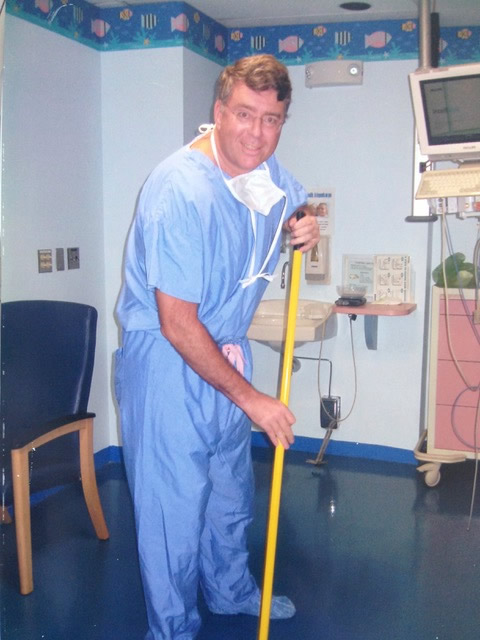 Synopsis: The current approach to diagnosis and treatment of Chiari malformations continues to generate considerable controversy especially when this comes to the role of cerebellar tonsillar manipulation during surgical decompression. Debate surrounds the etiology of syringomyelia in this setting and many individuals advocate removing or shrinking the tonsils to open up the craniocervical CSF pathways. Nevertheless, other individuals advocate minimal manipulation of the tonsils to avoid creating additional scar at the chokepoint of CSF flow between the brain and spinal cord. Experience at Children’s National Hospital (Washington DC) over two decades appears to demonstrate an increase incidence of failed surgery and need for re-do Chiari surgery when there is direct tonsillar manipulation (shrinkage/removal) when compared to the cohort where there is no direct involvement of the tonsils. We will share our experience with the audience and look forward to the inevitable lively debate.
Synopsis: The current approach to diagnosis and treatment of Chiari malformations continues to generate considerable controversy especially when this comes to the role of cerebellar tonsillar manipulation during surgical decompression. Debate surrounds the etiology of syringomyelia in this setting and many individuals advocate removing or shrinking the tonsils to open up the craniocervical CSF pathways. Nevertheless, other individuals advocate minimal manipulation of the tonsils to avoid creating additional scar at the chokepoint of CSF flow between the brain and spinal cord. Experience at Children’s National Hospital (Washington DC) over two decades appears to demonstrate an increase incidence of failed surgery and need for re-do Chiari surgery when there is direct tonsillar manipulation (shrinkage/removal) when compared to the cohort where there is no direct involvement of the tonsils. We will share our experience with the audience and look forward to the inevitable lively debate.
About Dr Keating: Dr Robert Keating is currently the McCullough Distinguished Professor of Neurosurgery and Chief of Neurosurgery at the Children’s National Medical Center in Washington, DC. Dr. Keating graduated from Georgetown University Medical School in 1983 and subsequently went to New York where he did his training in Neurosurgery at the Albert Einstein and Montefiore Medical Center in the Bronx. A fellowship in Pediatric Neurosurgery as well as Craniofacial Surgery followed at Einstein / Montefiore in 1990. Subsequent to his training, Dr Keating served in the Navy and was stationed at the Oakland Naval Hospital from 1990-1994, during which time he served as the Chief from ’91 to ’94. He then returned briefly for 2 years to the Bronx where he was on staff at Montefiore Medical Center as well as the Bronx Municipal Hospital Center. He came back to Washington in 1996 to join the faculty at the Children’s National Medical Center and later became Chief of the Division of Neurosurgery in 2003 and Professor of Neurosurgery and Pediatrics in 2008. His past appointments include the President of the Medical Staff at the Children’s National Medical Center as well as Head of Credentials and he currently maintains a busy practice of pediatric neurosurgery, with an emphasis on tumors, Chiari malformations, craniofacial reconstruction, spinal dysraphism, spasticity and brachial plexus surgery. As a member of the American Society of Pediatric Neurosurgery and International Society of Pediatric Neurosurgery, he has published and presented extensively in the field. His publications include the previous texts, “An Atlas of Orbitocranial Surgery” and “Tumors of the Pediatric Nervous System” (2nd edition published in 2013 ) with current work on Neurosurgical Operative Atlas, (2nd ed.Kobets A, Goodrich JT, and Keating RF, Thieme) due for publication in 2024. He is a reviewer for numerous journals, including Pediatric Neurosurgery, Neurosurgery, Pediatrics, Journal of Neuro-Oncology and is on the Editorial Board of Childs Nervous System. In addition, he is also Chair, Medical Advisory Committee on the Board of the American Syringomyelia Alliance Project as well as a founding member of the Posterior Fossa Society and maintains long-standing membership in the CNS , AANS , ASPN and is currently on the Executive Board of the ISPN.
Webcast – Synopsis: In the absence of complications, all the variants of Chiari surgical decompression are helpful, but in the hands of a top specialist, aggressive techniques of Chiari decompression are linked to better degrees of anatomical and clinical outcome, than their extradural counterparts. That said, some important points need to be made:
- In the hands of top experts using very aggressive Chiari techniques, the incidence of complications is equal (or even lower) when compared to beginners using Extradural decompression.
- From a recent poll, all the top international specialist in the field of Chiari (> 900 cases performed) stated that aggressive intradural techniques (with open arachnoid, and tonsillar manipulation) were their default procedures.
- Less experienced surgeons should start with the basic Extradural techniques, and they should try to “level up” as their skill set improves and their Chiari experience increases.
- Ideally, a top Chiari surgeon should master all the technical variants of the Chiari surgical spectrum (from simple Extradural, to very aggressive tonsillar manipulation), but this pattern will probably fade into extinction, since the recent proliferation of Chiari centers has fragmented the surgical experience of each Chiari specialist.
- “Tailoring” is the name of the game for a top Chiari expert; tailoring means adapting a technique, or pieces of different techniques to the individual anatomical and clinical case which is at hand.
- The new generation of Residents (and future Surgeons) is over-reliant on technology (i.e. sealants, etc.), and less tolerant to models of delayed gratification. With this premise, they will probably tend to favor Extradural techniques, instead of slowly master more rewarding alternatives with a longer learning curve.
CONCLUSION
- Beginners should start from basics surgical techniques.
- Young Chiari experts in the making should strive to “level up”.
About Dr Bolognese: A native of Torino, Italy, Dr Paolo Bolognese graduated from the Medical School of the University of Turin. He trained twice in Neurosurgery, under Prof. Fasano (Turin, Italy) and under Dr. Milhorat (Brooklyn, NY). In 2001, Dr. Bolognese joined Dr. Thomas Milhorat and then co-founded The Chiari Institute. In 2014, he started the Chiari EDS Center at Mount Sinai South Nassau, along with Dr. Roger W. Kula. His Neurosurgical interests span from Chiari I Malformation to Craniocervical Instability, Tethered Cord, Styloid Hypertrophy, Idiopathic Intracranial Hypertension, and Intracranial Hypotension.
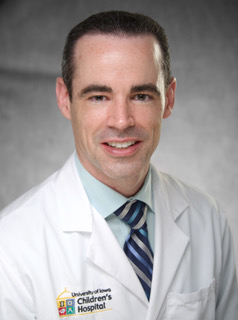 Synopsis: Educate patients and families on whether a fusion is needed or not during surgery for Chiari malformation type I.
Synopsis: Educate patients and families on whether a fusion is needed or not during surgery for Chiari malformation type I.
About Dr Dlouhy: Dr. Brian Dlouhy is a pediatric and adult neurosurgeon at the University of Iowa Hospitals & Clinics and University of Iowa Children’s Hospital in Iowa City, Iowa. He completed his neurosurgery residency at the University of Iowa working extensively under Dr. Arnold Menezes. He now works side by side with Dr. Arnold Menezes treating all disorders of the craniovertebral junction (CVJ) in children and adults. He also has an active research program studying the pathophysiology of Chiari I malformation and other conditions of the CVJ.

About Dr Heiss Dr John D. Heiss, is a Senior Clinician, the Head of the Clinical Unit of the Surgical Neurology Branch, and Program Director of the Neurological Surgery Residency Training Program at the National Institute of Neurological Disorders and Stroke (NINDS), National Institutes of Health (NIH) in Bethesda, Maryland. He is actively involved in clinical and translational research to improve the understanding and treatment of Chiari I malformation, syringomyelia, pain, brain tumors, and Parkinson’s disease. He is board-certified in neurological surgery and an expert in supervising and conducting clinical trials for CNS disorders. Dr. Heiss received his B.S. in Biomedical Sciences and M.D. from the University of Michigan. In addition, he completed his surgical internship and residency in neurosurgery at the University of Cincinnati College of Medicine. Before joining NINDS, Dr. Heiss was Co-Director of the Neuroscience Intensive Care Unit at the University of Cincinnati.
Synopsis: To educate clinicians on the different types of Ehlers Danlos syndrome (EDS) as well as its clinical manifestations. We will focus on the associations between EDS and other medical disorders and how the presence of EDS might moderate the clinical presentation and management of these disorders.
About Dr Martin: Dr Vincent Martin is the past president of the Ohio Headache Association and current president of the National Headache Foundation. He has also been a fellow of the American Headache Society and the American College of Physicians.
After graduating from the University of Cincinnati College of Medicine Dr. Martin completed a residency in internal medicine, followed by a fellowship in general internal medicine at UC. Dr. Martin was Chief Resident of the Department of Internal Medicine during his fellowship at UC.
Synopsis: CSF pressure disorders were previously but are now becoming an increasingly recognized cause of headache. Secondary causes of headache are important because if identified and treated can result in headache cure. Intracranial hypotension in particular, was described in the mid 1990’s but was felt to be a relatively uncommon entity. Today there is more awareness of the clinical presentation with its myriads of symptoms, the imaging findings and the treatments available. If recognized, unnecessary Chiari decompressions, subdural drainages or pituitary and dural biopsies can be avoided. Clinical symptoms, imaging findings, treatments and post treatment outcomes with associated case presentations will be presented.
About Dr Gray: Dr Linda Gray began her career at Duke Medical Center in neuroradiology and has been on faculty at Duke in Neuroradiology for 37 years. Initially her career was occupied with running the residency-training program for a dozen years. In 2002 when CT fluoroscopy came to fruition, she initiated CT fluoroscopic guided pain management and pioneered CT interventions along the spinal axis including central cervical epidurals extending from C1-2 and throughout the cervical, thoracic and lumbar spine. In 2006, she initiated a program in CT fluoroscopic guided interventions for the treatment of spontaneous intracranial hypotension. There are now 8 faculty at Duke treating patients with CSF pressure disorders in both neuroradiology and IR. Additionally, she and her colleagues have mentored at least 40 neuroradiologists and 30 institutions throughout the United States, Europe and Australia in the performance of these procedures and has initiated the concept of cerebrospinal fluid (CSF) pressure problems as a secondary cause of migraine headaches throughout the headache community. She is now an invited speaker on the subject, giving multiple lectures throughout the year
Synopsis: Ehlers–Danlos syndrome (EDS) has been linked to several neurological problems including Chiari malformations, atlantoaxial instability (AAI), craniocervical instability (CCI), and tethered cord syndrome. Of the 11 reported variants of Ehlers-Danlos syndromes, 2 variants have been associated with dysregulation of components of the immune system: peridontal Ehlers-Danlos syndrome (pEDS) is associated with mutations within the complement system and hypermobile Ehlers-Danlos syndrome (HEDS) /hypermobile spectrum disorder (HSD) have been linked to mast cell disease. This lecture will explore their relationship between heritable disorders of connective tissue and components of the immune system, which dysregulation of the innate immune system increases the risk of spine instability and neurological compromise. This, in turn, supports the argument to screen for immune and connective tissue problems in patients with the above-mentioned neurological disorders.
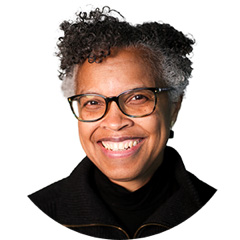
About Dr Maitland: Dr. Anne Maitland is board-certified in allergy & immunology and internal medicine. She previously served as the medical director of Comprehensive Allergy & Asthma Care in New York and Assistant Professor in the Department of Medicine, Allergy and Clinical Immunology at the Icahn School of Medicine at Mount Sinai.
As an allergy/immunology specialist at Metrodora Institute, Dr. Maitland’s clinical and research efforts are focused on increasing access to allergy and immunology specialty care. She is also one of the country’s top experts in immune-mediated disorders, including mast cell disease (MCD). She is a Fellow of the American College of Allergy, Asthma and Immunology, member of the American Academy of Allergy, Asthma and Immunology, and Vice Chair of the Allergy/Immunology Work Group of the National Medical Association.

About Dr Veznedaroglu: Erol Veznedaroglu, MD, FACS, FAANS, FAHA, or Dr. Vez, is one of the nation’s most innovative and experienced vascular, dual-trained neurosurgeons. He is director of the Drexel Neurosciences Institute and holds the Robert A. Groff Chair in Neurosurgery. Dr. Vez is also chair of Global Neurosciences Institute, LLC (GNI) leading a team of some of the nation’s most experienced neurosurgeons specializing in comprehensive care including vascular, tumor, spine and functional neurosurgery, as well as a consortium of neuroscience physicians providing subspecialty neurology and comprehensive pain management clinical services. He is board certified in neurological surgery, and is a fellow of the American College of Surgeons (FACS), the American Association of Neurologic Surgeons (FAANS) and the American Heart and Stroke Association (FAHA).
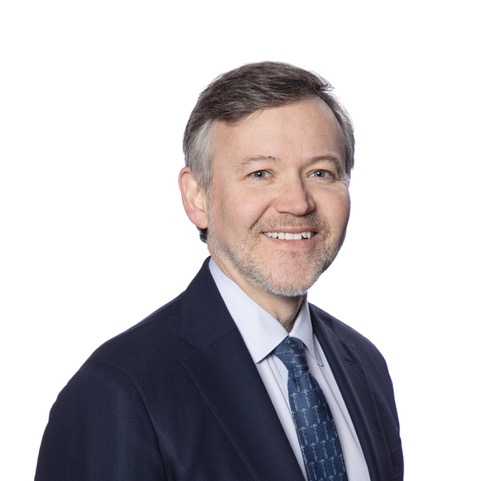 Synopsis: The natural history of scoliosis in the presence of CM-I is variable, though most curves remain stable. Understanding this variability is a first step toward building a prediction model for outcomes for these patients.
Synopsis: The natural history of scoliosis in the presence of CM-I is variable, though most curves remain stable. Understanding this variability is a first step toward building a prediction model for outcomes for these patients.
About Dr Maher: Dr Cormac O. Maher, Botha Chan Professor of Neurosurgery, Stanford University Chief of Neurosurgery, Lucille Packard Children’s Hospital at Stanford Cormac O. Maher, MD, has been named pediatric neurosurgery division chief at Stanford Department of Neurosurgery. His appointment started on March 1, 2023.
Dr. Maher’s areas of clinical interest include the surgical treatment of Chiari Malformation, arteriovenous malformations, Moyamoya disease, cavernous malformations, pediatric brain tumors, spinal dysraphism, tethered spinal cord, and hydrocephalus.
Dr. Maher attended medical school at Georgetown University. He completed a surgical internship and neurosurgical residency at the Mayo Clinic in Rochester, Minnesota. After residency, he completed a in pediatric neurosurgery fellowship at Boston Children’s Hospital under the direction of R. Michael Scott, M.D. Afterward, he completed a fellowship in cerebrovascular neurosurgery at the Brigham & Women’s Hospital. In 2006, Dr. Maher joined the faculty of the University of Michigan where he served as Professor of neurosurgery, Residency Program Director, and department Vice-Chair for Education.
Dr. Maher has published over 200 articles on a wide variety of neurosurgical topics in scientific journals and medical books. He has made over 230 presentations of his work at national medical meetings. He has served on the editorial board of the Journal of Neurosurgery Publishing Group including a term as co-chair of the editorial board for Journal of Neurosurgery: Pediatrics. He has served as Chair of the Accreditation Council for Pediatric Neurosurgery Fellowships and is a director of the Committee for Advanced Subspecialty Accreditation of the Society for Neurological Surgeons. He is on the executive board of the Pediatric Section of the American Association of Neurological Surgeons.
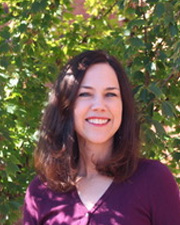 Synopsis: Ashley-Koch, PhD will review what is currently known about the genetics of Chiari malformations, including work by her group, as well as other groups in the field.
Synopsis: Ashley-Koch, PhD will review what is currently known about the genetics of Chiari malformations, including work by her group, as well as other groups in the field.
About Dr Koch: Dr Allison Ashley-Koch, is a Professor in the Duke Molecular Physiology Institute and the Department of Medicine at Duke University Medical Center. Dr. Ashley-Koch is a genetic epidemiologist whose primary goal is the identification of genes that contribute to human genetic conditions, including the identification of gene-gene and gene-environment interactions. She uses multiple genetic and genomic approaches in her research. Dr. Ashley-Koch is currently involved in studies to dissect the genetic etiology of Alzheimer disease, anencephaly and other neural tube defects, Chiari malformations, post-traumatic stress disorder, and suicidal phenotypes. She also works on the genetic modifiers of sickle cell disease. She is passionate about training the next generation of scientists and currently serves as the Director of the Duke University Program in Genetics and Genomics, a graduate training program for PhD students.
Speaker Appreciation Dinner ( offsite). Bus will pick up speakers
Thursday, July 18, 2024
Thursday, July 18, 2024

About Dr Grant: Gerald Grant, M.D., an internationally known surgeon-scientist, has been named the new Chair of the Department of Neurosurgery at Duke University School of Medicine, effective April 1, 2022.
Grant returns to Duke from Stanford University, where he is currently an endowed professor and chief of pediatric neurosurgery.
In 2006, Grant joined Duke’s faculty as an associate professor in the Department of Surgery after serving in active duty in the United States Air Force. He was deployed to Iraq in support of Operation Iraqi Freedom. He left Duke in 2013 to become Chief of Pediatric Neurosurgery and Vice Chair of Neurosurgery at Stanford. He also serves an Associate Dean of Academic Affairs at Stanford.
“I am thrilled to welcome Dr. Grant back to Duke,” said Mary E. Klotman, M.D., dean of the Duke University School of Medicine. “A preeminent clinician, scientist and educator, Dr. Grant brings experience, knowledge and skills acquired over his distinguished 30-year career to guide our outstanding Neurosurgery Department into the future. His vision, collaborative spirit and leadership will be instrumental in advancing the School of Medicine’s mission of excellence in patient care, discovery, education, and community partnership.”
Grant specializes in treating pediatric and young adults with brain tumors and medically refractory epilepsy. His research focuses on innovative ways to open the blood-brain barrier to improve the delivery of novel drugs and immunotherapy to target brain tumors.
Grant is currently an investigator on several initiatives funded by the National Institutes of Health (NIH) relating to brain tumors, focused ultrasound, brain tumor immunotherapy and concussion. He is an author on 280 peer-reviewed journal articles, holds several leadership positions nationally, and serves on multiple editorial boards in neurosurgery.
Grant received his undergraduate degree in neurosciences at Duke University and his medical degree from Stanford University School of Medicine. He completed his residency in neurosurgery at the University of Washington in Seattle and fellowship in pediatric neurosurgery at Seattle Children’s Hospital.
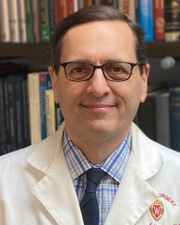
About Dr. Iskandar: Dr. Bermans Iskandar is Professor of Neurosurgery and Pediatrics, and Director of the Pediatric Neurosurgery program at the University of Wisconsin Hospital and Clinics. His clinical interests include neuro-endoscopy, brachial plexus reconstruction, and surgery of congenital CNS malformations, especially hydrocephalus, Chiari malformations, and syringomyelia. Led by Dr. Iskandar, the Wisconsin Hydrocephalus Group (WHP) of engineers, physicists, neurologists, and neurosurgeons aims to determine the etiology of ventricular shunt malfunction and optimize the devices used to treat it. As well, Dr. Iskandar directs a translational research laboratory that has uncovered an important link between folate metabolism, epigenetic influences, and axonal regeneration after central nervous system injury. Dr. Iskandar has recently concluded his service as Chair of the AANS/CNS Section on Pediatric Neurosurgery, and Chair of the American Board of Pediatric Neurological Surgery.
 Synopsis: The lecture will discuss the diagnostic approach to the occult tethered cord syndrome based on patient reported symptoms and neurological biomarkers including the implication and assessment of co-morbidities in the management of OCTS. Also, data on complications including a presentation of retethering rates will be covered with preliminary data on long-term outcomes and the assessment.
Synopsis: The lecture will discuss the diagnostic approach to the occult tethered cord syndrome based on patient reported symptoms and neurological biomarkers including the implication and assessment of co-morbidities in the management of OCTS. Also, data on complications including a presentation of retethering rates will be covered with preliminary data on long-term outcomes and the assessment.
About Dr Klinge: Dr. Petra Klinge serves as an internationally renowned clinician for diagnosing and neurosurgical treatment of patients with CSF disorders working on the unifying concept of cognitive problems related pathology in Hydrocephalus of aging and pediatric patients. Her practice also includes patients with associated developmental Cerebrospinal fluid disorders, such as spina bifida, Chiari malformation, tethered cord, patients with connective tissue disorders and associated spinal fluid disorders including syringomyelia and occult tethered cord syndrome. Her research focuses on the pathophysiology and diagnosis of tethered cord and on establishing criteria and clinical biomarkers for surgical intervention in tethered cord syndromes (1-5).
In collaboration with neuroradiology in her practice at Rhode Island Hospital and the Carney-Institute and the department of bio-engineering at the Brown Medical School she develops pioneering and novel clinical and in-vivo diagnostics and pathological studies to improve the management and validation of those conditions.
In the past 2 years, Dr. Klinge has also collaborated with the University of Akron Conquer Chiari Research Center, founded by the Department of Psychology and the Department of Biomedical Engineering on the implications of ageing in Chiari as well as identifying cognitive and imaging biomarkers to support the biodynamic concept of the failure of Cerebrospinal fluid regulation at the base of the skull in adult Chiari malformation. Her research has focused on the failure of “Myodural bridges” and defunct collagen that supports the aspects of CSF circulatory failure at the base of the skull in various conditions including Chiari associated with connective tissue disease and she works on the novel concept of a “Spinal cord motion disorder” that might explain and support occult neurosurgical pathologies associated with impaired CSF regulation and tethering of the spinal cord and brain stem. She had been appointed by the National Academy of Sciences and has served in 2022 in a committee to establish disability criteria for the neurological conditions in patients with Ehlers-Danlos-Syndrome and Marfan Syndrome as an nationally acknowledged expert for spinal cord disorders and tethered cord syndrome. Selected Heritable Disorders of Connective Tissue and Disability | National Academies.
Synopsis: Chiari malformations in adults and children vary significantly in anatomy, symptoms, and clinical history. This talk will review special cases in which adjuncts such as craniocervical fusion, skull base resections, and odontoidectomy are considered for improved outcomes. Furthermore, treatment options for previous surgical complications or clinical progression after surgery are reviewed.
 About Deb Bhowmick: Dr. Deb A. Bhowmick is a neurosurgeon specializing in complex spinal surgery, craniocervical junction, and congenital spinal malformation surgery at Duke University Hospital. He is an Associate Professor in the Department of Neurosurgery. Previously Dr. Bhowmick was Section Chief of Spinal Neurosurgery in the Department of Neurosurgery at the University of North Carolina at Chapel Hill. Dr. Bhowmick completed his residency in neurosurgery at the University of Pennsylvania and a fellowship in spinal surgery at the Cleveland Clinic. Dr. Bhowmick’s practice is focused on the surgical treatment of adult spinal deformities, craniocervical anomalies, and adult manifestations of congenital spinal anomalies. His academic interests include the use of novel minimally invasive approaches to cervical and lumbar spinal deformities as well as tethered cord, intradural spinal cysts, CSF flow anomalies, and syringomyelia. He is board certified and is an associate editor of the journal, Operative Neurosurgery.
About Deb Bhowmick: Dr. Deb A. Bhowmick is a neurosurgeon specializing in complex spinal surgery, craniocervical junction, and congenital spinal malformation surgery at Duke University Hospital. He is an Associate Professor in the Department of Neurosurgery. Previously Dr. Bhowmick was Section Chief of Spinal Neurosurgery in the Department of Neurosurgery at the University of North Carolina at Chapel Hill. Dr. Bhowmick completed his residency in neurosurgery at the University of Pennsylvania and a fellowship in spinal surgery at the Cleveland Clinic. Dr. Bhowmick’s practice is focused on the surgical treatment of adult spinal deformities, craniocervical anomalies, and adult manifestations of congenital spinal anomalies. His academic interests include the use of novel minimally invasive approaches to cervical and lumbar spinal deformities as well as tethered cord, intradural spinal cysts, CSF flow anomalies, and syringomyelia. He is board certified and is an associate editor of the journal, Operative Neurosurgery.
About Dr David Hasan: Dr. David Hasan is a scientist neurosurgeon with extensive experience in management of cerebrovascular diseases and skull base tumors. He is a fellowship – dual trained open cerebrovascular and endovascular with a background of treating over 2500 brain aneurysms using very innovative techniques including awake surgery.
He is an international authority in cerebrovascular research with over 270 peer-reviewed PubMed publications, multiple NIH grants, and member of several editorial boards of high impact medical and surgical journals.
 Synopsis: Patients with Chiari malformation and associated conditions have complex symptomatology. Among the most common symptoms are those of orthostatic intolerance, including orthostatic hypotension, postural orthostatic tachycardia syndrome (POTS), and other form of orthostatic/postural dizziness. We will review these intricate conditions and state-of-the-art approach for each.
Synopsis: Patients with Chiari malformation and associated conditions have complex symptomatology. Among the most common symptoms are those of orthostatic intolerance, including orthostatic hypotension, postural orthostatic tachycardia syndrome (POTS), and other form of orthostatic/postural dizziness. We will review these intricate conditions and state-of-the-art approach for each.
About Dr Jaradeh: Dr. Safwan Jaradeh is currently Professor and Director of the Autonomic Disorders Program at Stanford University School of Medicine since 2011. Prior to that, he was on the Neurology Faculty at the Medical College of Wisconsin from 1989 to 2011, where he also served as Professor and Chair of the Department of Neurology from 2000 to 2011. Dr. Jaradeh trained in Internal Medicine and Neurology in Paris and Cincinnati, and completed Neuromuscular and Autonomic Fellowships at the Mayo Clinic, and Neuromuscular and Neuro-rehabilitation Fellowship at the University of Michigan. His research and clinical focus is in the areas of Autonomic Disorders, Orthostatic intolerance, Peripheral and Autonomic Neuropathies, Neuromuscular Disorders, Electromyography, Cranial and Bulbar disorders. He has won several teaching awards at both Institutions.
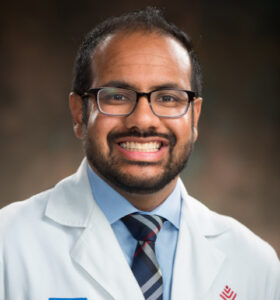 Synopsis: Chiari malformations and associated Syringomyelia syndromes are complex problems. Often, additional considerations and relationships with other disease processes need to be investigated. There is a well-known relationship between Chiari malformation and thoracolumbar scoliosis. For example, the incidence of scoliosis can range from 2 to 4% in the general population but may be as high as 30% in patients with Chiari malformation type 1 and as high as 70% with spinal cord syrinx. In this discussion, we will discuss the relationship between these conditions and discuss emerging evidence regarding risk factors, diagnosis, and management of children with Chiari-related scoliosis.
Synopsis: Chiari malformations and associated Syringomyelia syndromes are complex problems. Often, additional considerations and relationships with other disease processes need to be investigated. There is a well-known relationship between Chiari malformation and thoracolumbar scoliosis. For example, the incidence of scoliosis can range from 2 to 4% in the general population but may be as high as 30% in patients with Chiari malformation type 1 and as high as 70% with spinal cord syrinx. In this discussion, we will discuss the relationship between these conditions and discuss emerging evidence regarding risk factors, diagnosis, and management of children with Chiari-related scoliosis.
About Dr Ravindra: Dr. Vijay Ravindra is a board certified adult and pediatric neurosurgeon and active duty Naval Officer currently stationed at Naval Medical Center San Diego and affiliated with Rady Children’s Hospital. He completed his neurosurgery training at the University of Utah where he worked closely with Dr. Douglas Brockmeyer. He completed his pediatric neurosurgery fellowship at Texas Children’s Hospital – Baylor College of Medicine. His clinical interests include disorders of the pediatric spinal column, in particular the craniocervical junction and scoliosis. He is actively studying tissue properties of the CCJ in children with Chiari malformations.
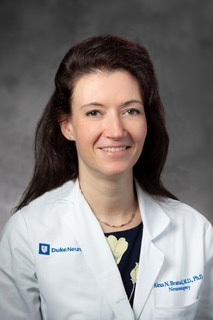 Synopsis: This talk will review the diagnostic criteria and our current understanding of the pathophysiology of idiopathic intracranial hypertension (pseudotumor cerebri). We will discuss current medical and surgical interventions, with a particular focus on ongoing and upcoming clinical trials.
Synopsis: This talk will review the diagnostic criteria and our current understanding of the pathophysiology of idiopathic intracranial hypertension (pseudotumor cerebri). We will discuss current medical and surgical interventions, with a particular focus on ongoing and upcoming clinical trials.
About Alexa Bramall: Dr. Alexa Bramall is an Assistant Professor in the Department of Neurosurgery at Duke University Hospital specializing in adult CSF flow disorders and hydrocephalus. Originally from Canada, she completed her M.D. and Ph. D. at the University of Toronto, followed by residency and an enfolded fellowship in neurosurgical oncology at Duke. Dr. Bramall’s academic research interests include the study of CSF regulation in the choroid plexus and the identification of novel treatments for adult hydrocephalus.

About Dr. Batzdorf: Dr Ulrich Batzdorf is a Professor of Neurosurgery at UCLA School of Medicine. . His interest in Syringomyelia dates back to 1979, when he first became involved in the care of a patient with the condition. It has remained a major focus of his clinical and academic activity, with
numerous publications, including Syringomyelia: Current Concepts in Diagnosis and Treatment published in 1991. Ten years later along with doctors Tamaki and Nagashima of Japan Syringomyelia, Current Concepts in Pathogenesis and Management was published. Dr. Batzdorf’s primary clinical and research focus is on the treatment of Chiari malformation and syringomyelia and spinal cord tumors. He is a coveted speaker on the disorders at medical conferences around the world.
 Synopsis: In this talk, we will explore the integration of advanced imaging technologies with AI to enhance the diagnosis of brain diseases and predict neurosurgical outcomes. Highlighting recent advancements, we will demonstrate how advanced imaging techniques reveal hidden brain dynamics in patients with Chiari Malformation. We will elucidate how AI-driven imaging analysis improves diagnostic accuracy and helps identify high-risk patients. Additionally, we will discuss the implications of these innovations on patient care, treatment optimization, and future developments.
Synopsis: In this talk, we will explore the integration of advanced imaging technologies with AI to enhance the diagnosis of brain diseases and predict neurosurgical outcomes. Highlighting recent advancements, we will demonstrate how advanced imaging techniques reveal hidden brain dynamics in patients with Chiari Malformation. We will elucidate how AI-driven imaging analysis improves diagnostic accuracy and helps identify high-risk patients. Additionally, we will discuss the implications of these innovations on patient care, treatment optimization, and future developments.
About Dr Zhao: Dr. Moss Zhao is an Instructor in the Department of Neurosurgery at Stanford University. He develops cutting-edge and clinically viable imaging technologies to improve the diagnosis and treatment of cerebrovascular diseases across the lifespan. His specific areas of expertise include physiological modeling, image analysis, and artificial intelligence. Dr. Zhao’s scientific contributions aim to significantly improve the early detection of neurological disorders and optimize patient selection in neurosurgical procedures and clinical trials.
Dr. Zhao graduated from University of Oxford. Recently, he received the prestigious Career Development Award from the American Heart and Stroke Association to propel his career as an independent investigator. Dr. Zhao is passionate about science communication and community-engaged research. His science podcasts have been downloaded over 10,000 times in more than 20 countries.
Synopsis: Discussion relating to barriers of care for Chiari patients beyond our borders. Dr Bugallo will discuss personal experiences while Dr Bosco will address overall institutional problems relating to this care.
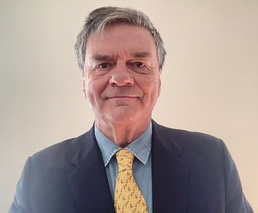
About Dr Lazareff: Emeritus Professor of Neurosurgery, Department of Neurosurgery. David Geffen School of Medicine. University of California, Los Angeles. Clinical and research interest in congenital malformations of the Central Nervous System. Currently involved in studying barriers to care for congenital diseases of the nervous system.
 About Dr Bugallo: Dr Maria José Bugallo, Pediatrician. Neonatologist. Hospital de Interzonal de Agudos “Luisa C. de Gandulfo” Buenos Aires.
About Dr Bugallo: Dr Maria José Bugallo, Pediatrician. Neonatologist. Hospital de Interzonal de Agudos “Luisa C. de Gandulfo” Buenos Aires.
Follow up clinic of high risk infants. ARGENTINA.
 About Dr Torres: Dr Juan Bosco Gonzalez Torres, Neurosurgeon. Coordinator of Neurosurgical Services at “Hospital Bautista”. Managua. Neurosurgeon. “Hospital Vivian Pellas” Managua. NICARAGUA
About Dr Torres: Dr Juan Bosco Gonzalez Torres, Neurosurgeon. Coordinator of Neurosurgical Services at “Hospital Bautista”. Managua. Neurosurgeon. “Hospital Vivian Pellas” Managua. NICARAGUA
IVSF UCLA Ronald Reagan Medical Center. 2009. Pediatric Neurosurgery Department. AANS International Visiting Surgeons Fellowship IVSF. 2013. Memorial Hermann-Texas Medical Center. Pediatric Neurosurgery Department. IVSF Cardiff medical Center UK. Skull base Department & Pediatric Neurosurgery.
Past President ASOCAN (Central American Association of Neurosurgery). 2017-2019
Senior Delegate ANN (Nicaraguan Association of Neurosurgery)
Executive member committee FLANC (Latin America Association of Neurosurgery)
Editorial member committee in Pediatric Neurosurgery FLANC
After three wonderful days, it is time for us to bid our farewells. I want to express my gratitude to the patients and their families for their attendance and support. I especially want to thank all the speakers who generously spent their time with us. I cannot emphasize enough the dedication of these doctors and their efforts to improve our lives. The education and care they provide is truly remarkable. Please join us for a relaxing evening on the patio; all attendees are invited. For those of you who are staying for a few more days, we hope you have a fantastic time in the Durham/ Raleigh area.
On behalf of the Board and Staff
Sincerely, Patrice Schaublin, Executive Director
